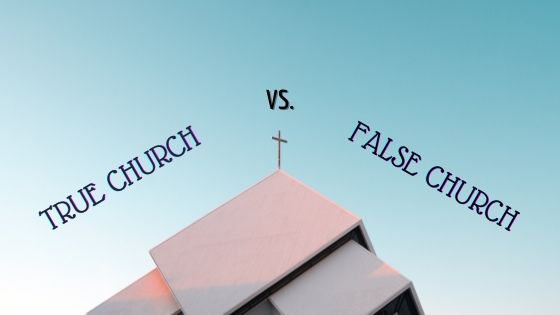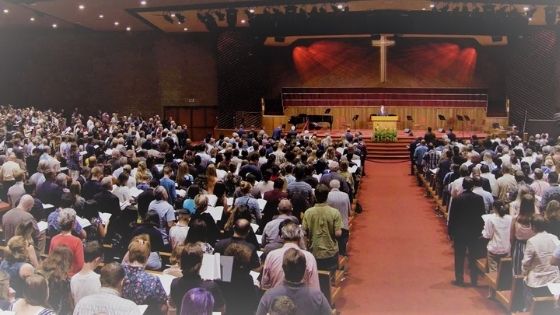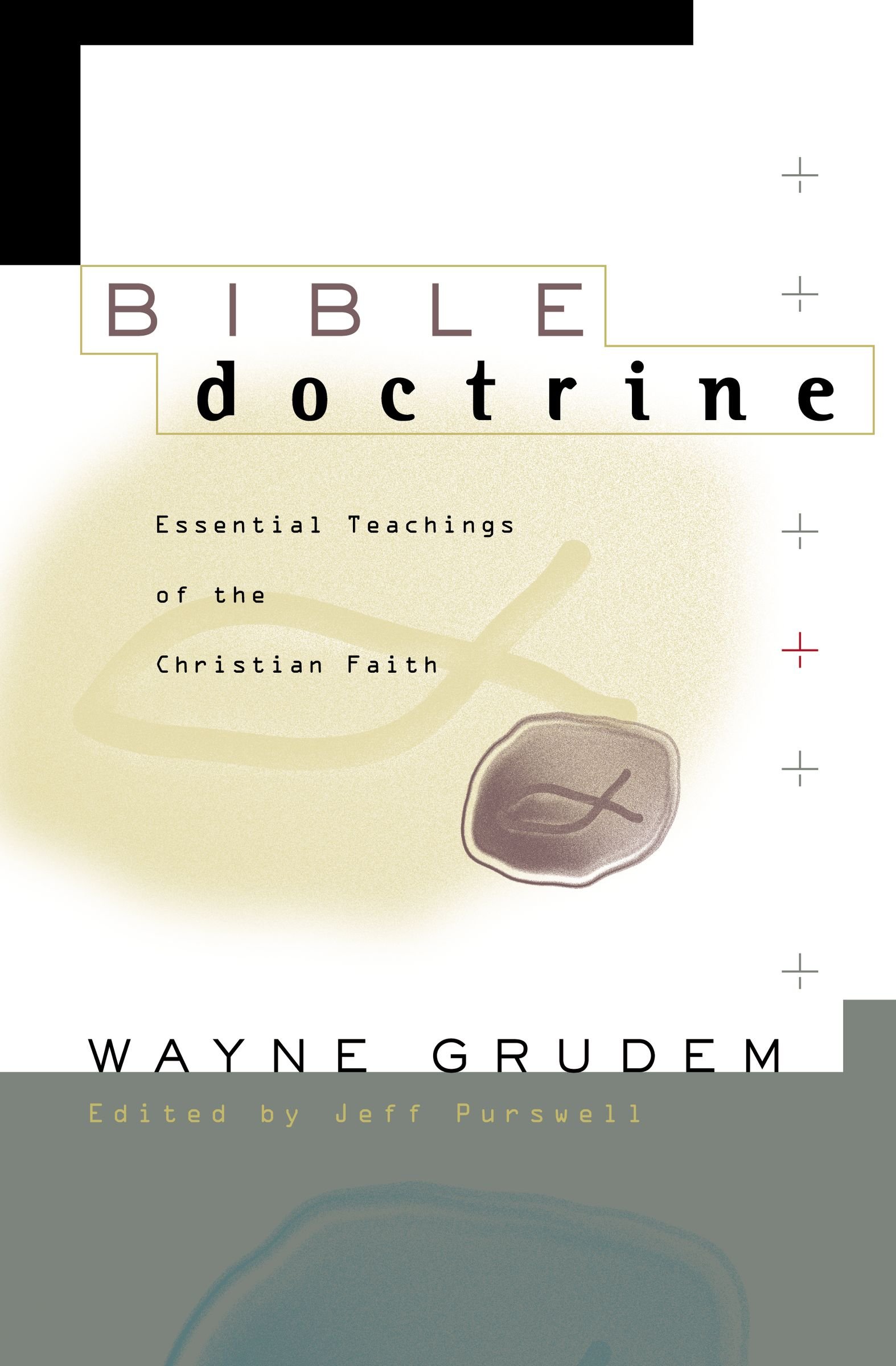
Recognizing a True Church
There are true and false churches. How do we recognize a true church? But what makes a church true or false? Is it possible that a group of people who claim to be Christians does not exhibit the qualities of a true church?
In the early centuries of the Christian church, the idea of a false church is unpopular. There was only one worldwide church, the “visible” church throughout the world, and that was, of course, the true church. This church had bishops and local clergymen and church buildings that everyone could see. Any heretics who were found to be in serious doctrinal error were simply excluded from the church.
What is the church?
The church is the community of all true believers for all time. It is made up of all those who are truly saved. Paul says this in Ephesians 5:25, “… Christ also loved the church and gave Himself for her.”
The term “the church” here is applied to all those whom Christ died to redeem, all those who are saved by the death of Christ. They include all true believers for all time, both believers in the New Testament age and believers in the Old Testament age as well.

Metaphors for the Church
Scripture uses a wide range of metaphors and images to describe to us what the church is like. In several passages, Paul views the church as a family (1 Timothy 5:1-2; Ephesians 3:14; 2 Corinthians 6:18). We are therefore brothers and sisters with each other in God’s family (Matthew 12:49-50; 1 John 3:14-18).
A somewhat different family metaphor is seen when Paul refers to the church as the bride of Christ. He says that the relationship between a husband and wife “refers to Christ and the church” (Ephesians 5:32). He goes further to say that it resembles an engagement between a bride and her husband-to-be (2 Corinthians 11:2).
The Bible uses other metaphors for the church such as:
- Branches on a vine (John 15:5)
- A building (1 Corinthians 3:9)
- A field of crops (1 Corinthians 3:6-9)
- An olive tree (Romans 11:17-24
- A harvest (Matthew 13:1-30; John 4:35)
The church is also viewed as a new temple not built with literal stones but built with Christian people who are “living stones” (1 Peter 2:5) built upon the “cornerstone” who is Christ Jesus (1 Peter 2:4–8).
We are also viewed as God’s house (Hebrews 3:6), with Jesus Christ Himself viewed as the “builder” of the house (Hebrews 3:3). The church is also viewed as “the pillar and ground of the truth” (1 Timothy 3:15). Finally, the church is viewed as the body of Christ (1 Corinthians 12:12-27).
Each of the metaphors used for the church can help us to appreciate more of the richness of privilege that God has given us by incorporating us into the church.

The Marks of a True Church
At the Reformation, a crucial question came up: How can we recognize a true church? Is the Roman Catholic Church a true church or not? To answer that question, people had to decide what were the “marks” of a true church. What are the distinguishing characteristics that lead us to recognize it as a true church?
The Bible does speak of false churches. Paul says of the pagan temples in Corinth, “The things which the Gentiles sacrifice they sacrifice to demons and not to God” (1 Corinthians 10:20). He tells the Corinthians, “You were Gentiles, carried away to these dumb idols” (1 Corinthians 12:2).
These pagan temples were certainly false churches or false religious assemblies.
What constitutes a true church?
1. The Word of God is Rightly Taught
In large measure, there was an agreement between Luther and Calvin on the question of what constituted a true church.
In the Lutheran statement of faith, they defined the church as “the congregation of saints in which the gospel is rightly taught.” Similarly, John Calvin said, “Wherever we see the Word of God purely preached and heard, it is not to be doubted, a church of God exists.”
It seems appropriate that we take Luther and Calvin’s view on the marks of a true church as correct still today. Certainly, if the Word of God is not being preached, but simply false doctrines or doctrines of men, then there is no true church.

2. The Right Administration of the Sacraments
This was probably stated in opposition to the Roman Catholic view that saving grace came through the sacraments. Thus, the sacraments were made “works” by which we earned merit for salvation. In this way, the Roman Catholic Church was insisting on payment rather than teaching faith as the means of obtaining salvation.
There are two ordinances of the church: Baptism and the Lord’s Supper. An organization that practices baptism and the Lord’s Supper is a continuing organization and is attempting to function as a church. But it is not merely about instituting these sacraments; it’s more about administering them the “right way.”
Groups who do not administer baptism and the Lord’s Supper signify that they are not intending to function as a church.
True and False Churches Today
People often ask, “Is the Roman Catholic today a true church?”
We cannot simply decide for the Roman Catholic Church as a whole because it is far too diverse. Some Roman Catholic parishes certainly lack both marks. And some view participation in the sacraments as a “work” that can earn merit with God. Such groups of people are not the true Christian church.
On the other hand, there are many Roman Catholic parishes in various parts of the world today where the local priest has a genuine saving knowledge of Christ. They also have a vital personal relationship with Christ in prayer and Bible study.

What about the Church of Jesus Christ of Latter-Day Saints (the Mormon Church) and the Jehovah’s Witnesses?
We might have difficulty determining just how much wrong doctrines can be tolerated before a church can no longer be considered a true church. But there are many clear cases where we can say that a true church does not exist.
The Mormon church does not hold to any major Christian doctrines concerning salvation or the person of God or the person and work of Christ. Clearly, it is a false church.
Similarly, the Jehovah’s Witnesses teach salvation by works, not by trusting in Jesus Christ alone. This is a fundamental doctrinal deviation because if people believe the teachings of the Jehovah’s Witnesses, they simply will not be saved. So the Jehovah’s Witnesses also must be considered a false church.
Bottom Line
When the preaching of a church conceals the gospel message of salvation by faith alone from its members so that the gospel message is not proclaimed, the group meeting there is not a church. When a group does not administer baptism and the Lord’s supper the right way, they are not a true church.
We can distinguish between a true and false church by using the Word of God. A true church has Christ not only as its foundation (1 Corinthians 3:11) but also the cornerstone of that foundation (1 Peter 2:7). One last thing, the true church governs itself by the authority of the Word (2 Timothy 3:16-17).
Are you in a true church?
Disclaimer: As an Amazon Associate, I may earn a commission when you use any links on this page to make a purchase, but at no additional cost to you.
Reference Material: Systematic Theology by Wayne Grudem
 Recommended Resource: Bible Doctrine: Essential Teachings of the Christian Faith by Wayne Grudem and Jeff Purswell.
Recommended Resource: Bible Doctrine: Essential Teachings of the Christian Faith by Wayne Grudem and Jeff Purswell.
Bible Doctrine takes a highly commended upper-level textbook on systematic theology and makes it accessible to the average reader. Abridged from Wayne Grudem’s award-winning Systematic Theology, Bible Doctrine covers the same essentials of the faith, giving you a firm grasp on seven key topics:
- The Doctrine of the Word of God
- The Doctrine of God
- The Doctrine of Man
- The Doctrine of Christ
- The Doctrine of the Application of Redemption
- The Doctrine of the Church
- The Doctrine of the Future
Like Systematic Theology, this book is marked by its clarity, its strong scriptural emphasis, its thoroughness in scope and detail, and its treatment of such timely topics as spiritual warfare and the gifts of the Spirit.
But you don’t need to have had several years of Bible school to reap the full benefits of Bible Doctrine. It’s easy to understand–and it’s packed with solid, biblical answers to your most important questions.